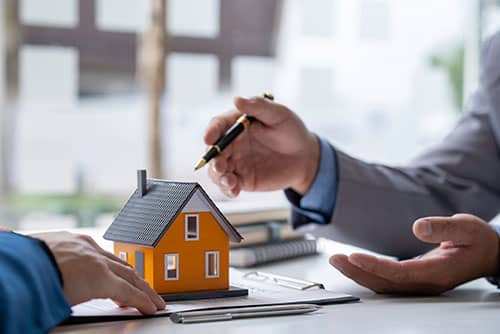The two primary forms of interest that can be held in property in the UK are freehold and leasehold. For a buyer, it is very important to understand the difference between the two, as each form of interest carries differing rights and obligations.
Freehold Property
When you purchase a freehold property, you become the owner of the property and the land on which it is stands. You own this land for ever (the technical term is that you have a “fee simple absolute in possession”) and your legal ownership will be registered at the land registry. The majority of houses in the UK are owned on a freehold basis, however you would have no doubt heard in the news that there is an increasing trend for builders to sell houses as leaseholds (although this practice is currently subject to review by the Government).
The key characteristics of freehold ownership are;
- You own both the building and the land.
- You own the land for ever.
- You will be responsible for the maintenance of any building on the land.
- There is no ground rent to pay.
- You will be responsible for insuring any property on the land.
Leasehold Property
When you purchase a leasehold property, you have the right to occupy that property for a determined period of time and you are called a “leaseholder”. The right of occupancy is governed by a legal document called the lease. As a leaseholder, you do not “own” the property or the land and you will have a landlord to whom you will have to pay an annual ground rent. Many flats are held on a leasehold basis.
The lease (together with certain statutes) governs the relationship between the landlord and leaseholder and will set out the rights, restrictions and the obligations placed on both parties. Leases are normally initially granted for a long duration which can be for up to 999 years (although 99 years, 125 years or 200 years are more normal).
It is important to note that a lease is a depreciating asset, which means that it becomes less valuable as the outstanding lease term reduces. At some point, if the lease is not extended, the remaining lease term will fall to a level, typically around 80 years, where the property becomes difficult to mortgage and sell. At the end of a lease, the property returns to the landlord.
A leaseholder has a legal right to extend their lease, however to do so they will have to pay an amount of money (premium) to the landlord. The extent of any premium payable is a complex calculation but as a general rule, the shorter the lease and the higher the ground rent, then the more expensive it will be to extend the lease.
The landlord will be responsible for maintaining and insuring the building (including any common areas such as lifts, stairs, gardens, roof, walls, hallways etc) and in return, the leaseholders are required to pay what is called an annual “maintenance” charge.
The Key characteristics of leasehold are as follows
- You own a lease over the property which will provide you the right to occupy the property for a determined number of years.
- You will need to pay the landlord an annual ground rent and maintenance charge.
- The landlord will be responsible for maintaining the building and the common areas.
- The landlord will be responsible for insuring the building.
- The lease might impose restrictions on how you use the property for example, you might not be able to let the property out or keep pets. Each lease carries its own set of restrictions, so the lease should be fully understood.
- If you do not fulfill your obligations under the lease, you will be in breach and the landlord can apply to a court to end the lease and take possession of the property.
- At the end of the lease the property reverts back to the landlord.
- Leaseholders have the right under law, to extend their lease, but have to pay the landlord a premium for doing this.
Commonhold Property
While the majority of properties in the UK are either freehold or leasehold, there is one further form of interest in land called “Commonhold” which was introduced by the Leasehold Reform Act in 2002.
Commonhold refers to where flats within a block are owned as individual freeholds. The common areas of the building (gardens, hallways, lifts etc) are owned and managed by a Commonhold Association which is in turn, owned by each of the individual freehold flats. The benefit of Commonhold over leasehold is that there is no landlord and no ground rent to pay. There is also no depreciating lease so the value of the property does not reduce over a period of time.
Since their introduction, Commonholds have not really gained much traction and this form of ownership is relatively rare.
If you are considering buying a property, it is absolutely essential that you understand exactly what you are purchasing, as each form of property interest carries significantly different rights and obligations. Enquiring whether the property is “leasehold or freehold” is probably the very first question that you should ask the Estate Agent?
Want to learn more?
For further information, please see our blogs on the common terms used in leasehold conveyancing,and what's involved in buying leasehold property. Also, read our further news on the Law Commission report on leasehold reform.













